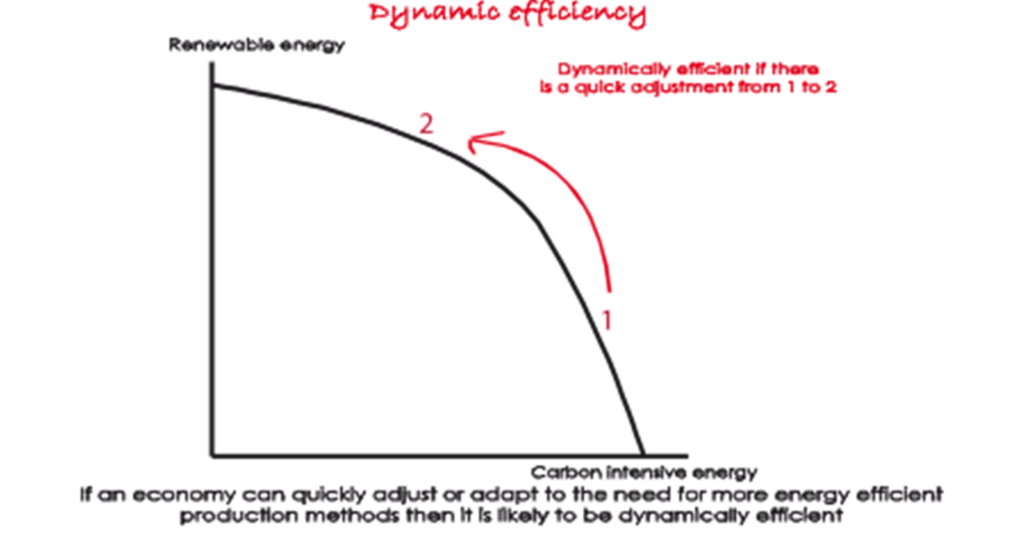Dynamic efficiency
Dynamic efficiency refers to how firms or industries are able to respond to changing market conditions or changes in technology. If the response is quick, then dynamic efficiency is said to be relatively high. It is represented by the speed at which the economy can re-allocate its resources from the production of one good or service to another, or from a sub-optimal combination to one that is allocatively efficient.
To illustrate, when a nation’s exchange rate increases to high levels for sustained periods of time (such as Australia between 2009 and 2014) it exerts significant pressure on that country’s tradables sector that may ultimately require structural adjustment. For example, the high dollar negatively impacted on sales volumes for parts of Australia’s manufacturing industry. Those firms that were able to quickly adapt to the new market conditions were considered to be dynamically efficient. Of course, the fall in the exchange rate (against the USD) since 2020 has had the reverse effects.
Another example relates to industry adjustments taking place in the energy sector. Using the PPC below, we can assume that our production possibilities are traditional forms of energy generation (e.g. coal fired power stations) and renewable forms of energy (e.g. wind and solar). Government policies, changing consumer preferences and advances in technology have combined to make renewable energy generation much more viable over time. Accordingly, if we can quickly adapt and move from point 1 to 2 (allocative efficiency), then the economy is considered to be ‘dynamically efficient.’

Course notes quick navigation
1 Introductory concepts 2 Market mechanism 3 Elasticities 4 Market structures 5 Market failures 6 Macro economic activity/eco growth 7 Inflation 8 Employment & unemployment 9 External Stability 10 Income distribution 11.Factors affecting economy 12 Fiscal/Budgetary policy 13 Monetary Policy 14 Aggregate Supply Policies 15 The Policy Mix


